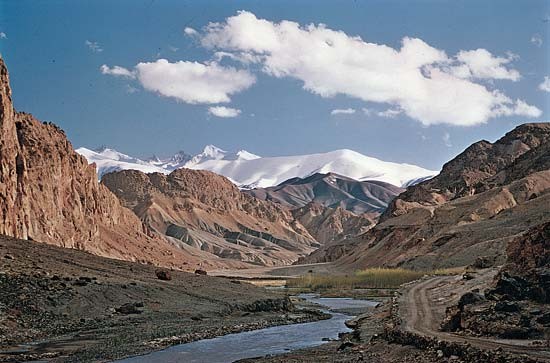
Shimla, March 22 (IANS) There are strong indications that the Hindu Kush, a mountain range extending west of the Himalayas, would be warmer and precipitation would increase, international water experts said on Sunday.
They favoured effective flood management that requires sharing data and information between the upstream and downstream areas, not only within the country but also at the trans-boundary level.
"Technological innovations based on satellite information, in combination with ground-based data, can be transformed into information that can prove vital in saving lives and properties," Santosh Nepal and Arun B. Shrestha, water experts for the Kathmandu-based International Centre for Integrated Mountain Development (ICIMOD), said.
The Hindu Kush Himalayan region depends on water resources for irrigation, food, hydropower, sanitation, and industry, as well as for the functioning of many important ecosystem services.
World Water Day falls on Sunday and this year's United Nations theme is 'Water and sustainable development'.
In a write-up, 'The Himalayan waters: Complex challenges and regional solutions', the experts said agriculture is a major contributor to the gross domestic product (GDP) of countries in the Hindu Kush Himalayan region.
In Nepal, it contributes to 35 percent of the national GDP. The Indus River system is a source of irrigation for about 144,900 hectares of land, whereas the Ganga basin provides irrigation for 156,300 hectares of agricultural land.
The experts said Koshi Flood Outlook being developed by ICIMOD and its national partners in Nepal and India have high potential for saving lives and properties in the basin.
Such efforts should be promoted widely in the region, they said.
During the Jure landslide in August 2014 in Nepal's Sindhupalchowk district, in which the Sunkoshi river was blocked for several days, a great concern emerged from the Indian side regarding the status of the landslide and the likelihood of an outburst flood.
The flood outlook was helpful in providing important information. This example shows that disaster risk reduction could be an entry point for immediate regional cooperation, said the article.
It warned that due to its physical setting, the Hindu Kush Himalayan region is prone to various water-induced hazards.
Every year during the monsoon, the floods bring havoc to the mountains and the plains downstream. These floods are often trans-boundary. Globally, 10 percent of all floods are trans-boundary and they cause over 30 percent of all flood casualties.
Many big rivers like the Sindhu (Indus), Ganga and the Brahmaputra originate from the snow and glacier covered high mountains, and have abundant seasonal and annual water supply.
According to the experts, climate change has exacerbated the situation by creating uncertainty about the future water availability and water security.
They said understanding the characteristics of water is crucial for sustainable water management.
Indian-origin Hindu Prime Minister Rishi Sunak has taken over the power of Britain. Even though h
Virat Kohli once again did not bat in the match played between Bangalore and Rajasthan on Tuesday
World on the verge of another war, Kim Jong sent 180 fighter planes to the border of South Korea
The ongoing war between Russia and Ukraine has already caused great damage to the world and in su
The Supreme Court on Thursday reserved its decision on a case related to stray dogs in Delhi-Nati
British Prime Minister Boris Johnson has spoken to Ukrainian President Volodymyr Zelensky about t
Vivek Agnihotri's upcoming film 'The Bengal Files', which was in the news even before its release
SRH vs PBKS: Feeding Markandey in place of Rashid… Aiden Markram revealed on the team change
In IPL 2023, Hyderabad registered their first win by defeating Punjab on Sunday. In the last two
The world will wreak havoc: World War will start in four weeks! Russian military analysts warned
Amidst the corona epidemic, the threat of world war is now underway. Russian military analysts ha
Sonam Raghuvanshi, who murdered her husband Raja Raghuvanshi on their honeymoon and threw his bod
After the defeat of Team India in the Cricket World Cup 2023, every Indian's heart broke into a h